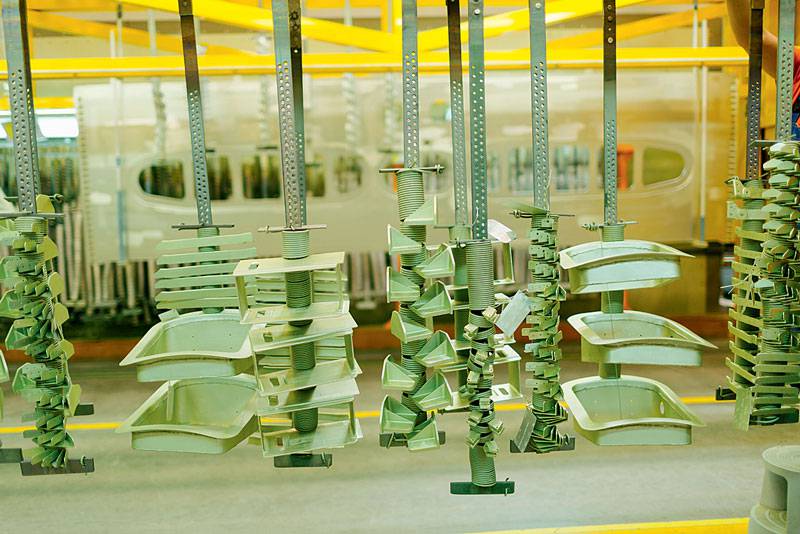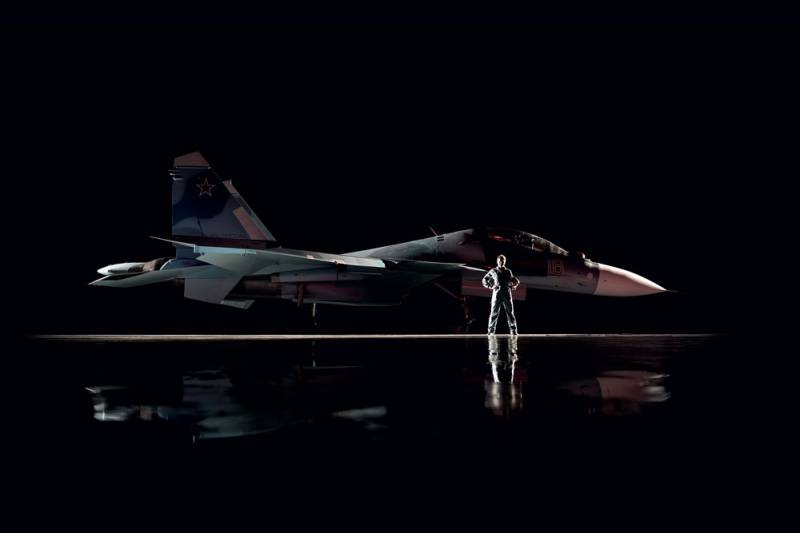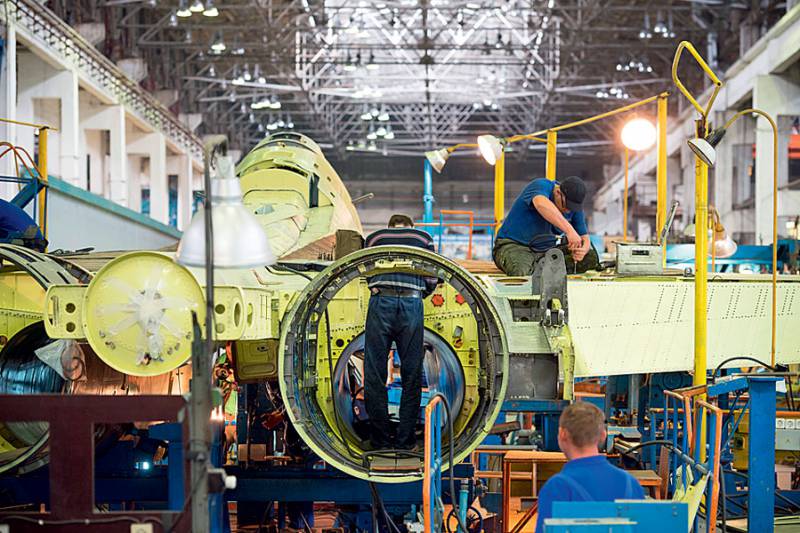Irkutsk SU-30CM: from India to Russia
It’s no secret that for many Russian defense enterprises, working for export has become the only way to survive in times when purchasing new weapons for the RF Armed Forces, they were extremely poorly financed. Then Russia armed others, but kept its army on a starvation diet, and this historical the moment is difficult to evaluate positively. Nevertheless, work on export contracts allowed our enterprises not only not to lose their production potential, but also to offer more advanced equipment to the Russian army when the money for rearmament appeared.
Do what was not
The creation of the “Irkutsk branch” of the Su-30MK is one of the most interesting stories of the post-Soviet aviation industry. The godfathers of the aircraft can be considered two managers: the Director General of the Irkutsk Aviation Production Association (IAPO, in 2002, was transformed into the Irkut Corporation) Alexei Fedorov and the General Designer of the Sukhoi Design Bureau Mikhail Simonov. Later, a major role in the development of the program was played by the President of the Irkut Corporation Oleg Demchenko, under whose leadership the line of Irkutsk Su-30 developed in the interests of the Ministry of Defense of the Russian Federation.
The Su-30MKI (MK index means “commercial, modernized,” and the next letter is reserved for the customer country, in this case India) became the first production aircraft in our country that belongs to the class of multi-functional fighters. Historically, in the USSR cars of this class were not produced. Battle aviation It was specialized in the types of tasks to be solved: interceptors, front-line fighters, aircraft for capturing air supremacy, attack aircraft. For a huge Soviet fleet of combat aircraft, this was partly justified. In the new historical conditions for the external, and then for the domestic market, it was necessary to create more universal combat vehicles - multi-functional fighters.
Initially, the Su-30MKI program was conceived to save Russia with one of the most capacious and attractive markets of combat aircraft - India. The problem was that the Indian market is highly competitive. It was impossible to push airplanes that were mass-produced in Russia at the beginning of the 1990-s onto it. In addition, India categorically did not like the role of a simple buyer of weapons. In the new program, she wanted to act as a customer who determines the requirements for the aircraft, as well as the participant in the cooperation and the aircraft manufacturer under license.
Amount of innovation
Indian Air Force inquiries were exceptionally high. This required maximum use in the development of the Su-30MKI scientific and technical reserve, accumulated by that time, the Russian aviation and radio-electronic industry. It is enough to name only some of the many innovations.
Su-30MKI became the world's first serial super-maneuverable fighter, which was provided by the installation of AL-31FP engines with thrust vector control, advanced remote control system and domestic developments in the field of aerodynamics. The Su-30MK powerplant includes two AL-31FP turbojet engines with an axisymmetric nozzle. The total thrust on the afterburner 25? 000 kgf provides horizontal flight at a speed of 2? M at high altitude and speed at low altitudes 1350 km / h.
Differential deviation at angles up to ± 15 degrees of axisymmetric engine nozzles, the axes of rotation of which are located at an angle 32 degrees to each other, allows you to control the thrust vector in pitch and yaw. Depending on the upcoming maneuver, the nozzles may deviate synchronously with the horizontal tail or separately from it.
Until Su-30MKI, no fighter in the world in the export version was equipped with an airborne radar with a phased antenna array. This technology, which belongs to the fifth generation of combat aircraft, was used at that time on a limited number of US Air Force fighters. The integrated radar sighting system with the HEADLIGHTS mounted on the Su-30MKI is able to detect and track up to 15 air targets and simultaneously attack up to four of them. It is also worth noting that onboard Su-30MKI for the first time in domestic practice, on-board radio-electronic equipment (OBEO) with an open architecture was installed.
At the time of launch of the program in Russia, there were not some electronic systems that implement the strict requirements of Indian customers. Therefore, for the first time in domestic practice, it was decided to integrate Western-made components into the avionics. The designers of the Sukhoi Design Bureau, the Ramenskiy instrument-making design bureau and other domestic companies coped with this brilliantly.
There are more buyers
However, the problems of the project went far beyond the scope of technology. Non-standard management decisions were required. For the first time, such a complex program was organized by a commercial enterprise - IAPO, which at the beginning of 1990-s was reincorporated by decision of the state. The planning depth was unusually large. Already when signing the first delivery contract in 1996, the 20-year program development plan was outlined. In addition to the development and supply, it included the transfer of documentation, the creation of production facilities, the deployment of operational infrastructure, the training of specialists for licensed production in India by HAL. Earlier, work of this magnitude in our country was organized and coordinated at the level of at least branch ministries.
Another difficulty lay in the fact that IAPO had to form and coordinate international cooperation, which was fundamentally new for the national defense-industrial complex. Finally, at IAPO, the burden of solving the financial problems associated with the development, testing and preparation of the production of a new combat complex was completely laid down.
Despite all these difficulties, in 2002, the first Su-30МКИ was transferred to the Indian Air Force. The machine quickly passed the stage of "childhood diseases" and became the flagship of Indian military aviation. A number of subsequent contracts signed on the initiative of the Ministry of Defense of India brought the total order for Su-30MKI to 272 machines. India’s positive experience has led two other customers to acquire the Irkutsk Su-30MK: Algeria and Malaysia. Note that these countries also belong to the category of picky buyers, because they have the opportunity to choose between Russian and Western equipment.
Thanks to the success of the Su-30MKI project, the Irkutsk Aviation Plant was re-equipped: digital technologies were introduced, the machine park was updated, international quality standards were established, and personnel training was organized. This will allow the company to successfully build military vehicles, as well as work on a new high-tech Russian airliner MC-21.

The leader of the aviation industry
In the process of working on the Algerian Su-30MKI (A) and the Malaysian Su-30MKM, the machine was constantly improved. Increased reliability, improved performance, new systems were introduced into the avionics. The profit from foreign supplies was invested in the technical re-equipment of the Irkutsk Aviation Plant, a branch of OJSC Irkut Corporation. As a result, by now it has become one of the best enterprises in the technological equipment of not only the aircraft industry, but also the entire Russian defense industry.
In addition to the machines belonging to the “Indian” branch Su-30MK, the Yak-130, a two-seat combat training aircraft, is produced here. Also at IAP, the construction of the first samples of the newest Russian medium-haul airliner MC-21, which is expected to show competitive economic characteristics due to the use of composite components in the design, has begun.
The success of the MKI project told about the beneficial effect on the fate of the Irkutsk enterprise, said Irkut Corporation President Oleg Demchenko: “The Su-30MKI program has become the basis for the development of our corporation. We invested the profits from export deliveries in the development of new projects, such as the Yak-130 combat training aircraft and the MS-21 passenger liner. An equally important area of our investments is a cardinal technical re-equipment of the Irkutsk Aviation Plant. We conducted a comprehensive introduction of digital technologies, updated the machine park, introduced world-wide quality standards, conducted mass retraining of engineers and workers. As a result, the capabilities of the enterprise have significantly increased. In the past, in the best years, we raised fighters per year to 30 fighters. Today, the total annual release of the Su-30CM and Yak-130 is approaching 60 machines. The growth was achieved on the background of the enormous work on the preparation for the serial production of the MS-21 aircraft and the production of the first MS-21-300 aircraft intended for testing. ”
Make for yourself
The optimal combination of combat effectiveness and operational characteristics of the Irkutsk Su-30 and cost parameters of the program attracted the attention of the Ministry of Defense of Russia, which began in the beginning of 2010-s to radically re-equip the combat aviation fleet. As a result, in 2012, contracts were signed for the supply of two large batches of Su-30CM multifunctional fighter jets to the Russian Air Force. This machine was the development of export aircraft Su-30MKI and Su-30MKM. In a short time, Irkut and the Sukhoi Design Bureau refined the aircraft to meet the requirements of the Ministry of Defense of the Russian Federation, and in 2013, it successfully passed the tests that opened the way for the troops. Today, the Su-30CM fighter regiment deployed at the Domna Air Force Base of the Eastern Military District fully mastered the new machine and is on combat duty.
Two-seater multifunctional Su-30CM was chosen by naval aviation of the Russian Navy for its coastal units. Their supply to the troops is already underway. Russia's ally in the CSTO Kazakhstan has become a new foreign customer of the Su-30CM.
The family of "Irkutsk" Su-30 good prospects. The total order for Su-30МКИ / МКИ (А) / МКМ / СМ aircraft exceeded 400 aircraft. It is expected that it will increase. About 300 aircraft successfully operated in the army. The first machines delivered to India are included in the middle stage of the life cycle, which promises serious orders for repairs.
At this stage, the aircraft will acquire the appearance of an aircraft, after which it will go to the final assembly shop.
It is still difficult to recognize the Yak-130 training and combat aircraft in the design carried by the crane factory shop at the Irkutsk aircraft factory. Gaining wings ahead. Su-30MKI and Su-30CM assembly line. Today, if we talk about the interest of customers and production volumes, the Russian military aircraft industry feels much better than civilians. It is hoped that this will not always be the case and civil projects will also gain strength and momentum.
Plus "BrahMos"
Fighting upgrades are underway. The first such project is to equip part of the Su-30MKI with supersonic BrahMos cruise missiles. BrahMos is another high-profile Russian-Indian project, in which the Reutov JSC MIC NPO Mashinostroyenia took part on our part. "BrahMos" is built on the basis of export anti-ship missile "Yakhont" (in the domestic version, it is called P-800 "Onyx"). The rocket is designed to destroy a wide range of targets, has a high range (up to 290 km), high supersonic speed (up to 2,8 M), powerful combat load (up to 250 kg), and low visibility for radar. The flight of the rocket, the weight of which in the base case is 3000 kg, is carried out in the height range 10 − 14 thousand meters along a variable trajectory. In practice, the “rocket shot and forgot” principle is implemented in practice, since the rocket finds the target itself. The air-launched missile is lighter than the base on the 500 kg. According to experts, there are no analogues of such a rocket, which would have a supersonic speed and a similar range of flight. In relation to foreign counterparts that are being exploited today, the BrahMos has three times the speed advantage, two and a half times the range, and three to four times the response time.
The first aircraft modified in India for testing the aviation version of the BrahMos-A rocket was handed over to the Indian Air Force in February 2015. The Su-30MKI + "BrahMos" complex has unique capabilities for hitting sea targets with strong air defense. The program of the “big modernization” is being discussed, as a result of which the “Irkutsk” Su-30 will get a more efficient locator and updated avionics.
It is interesting that the Su-30MK line of aircraft has not only an “Indian”, but also a “Chinese” branch. Production of the Su-30MKK was organized at the aircraft factory in Komsomolsk-on-Amur. But this is a completely different story.


Information